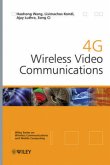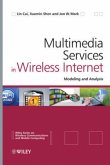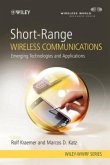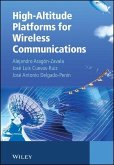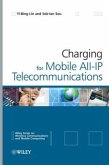Presents the model and methodology, applied by ITU-R WRC'07, to calculate the spectrum requirement for IMT-Advanced Systems, i.e. the next generation wireless communication systems.
Spectrum requirement Planning in Wireless Communications: Model and Methodology for IMT-Advanced is a self-contained 'handbook'" of the models and methodologies used for the spectrum requirement calculating for IMT-Advanced systems, as well as for the predecessor IMT-2000 systems. the reader will learn how the spectrum requirement is calculated for real systems that prevail worldwide. The book also provides the basis on which to develop advanced methodologies for forthcoming systems, as the spectrum regulation will continue in the future.
Key Features:
_ Provides the reader with information on how the spectrum requirement is calculated for real systems that prevail worldwide
_ Contains useful tables and examples, such as a flowchart of the methodology
_ Introduces definitions of service category and radio environment, the process of distributing traffic to radio environments, and the method to calculate the required spectrum
_ Applies queueing and loss models for the calculation of required system capacity
_ Explains how to use the calculation tool package
_ Provides a link to a website with the downloadable tool applied by ITU-R WRC'07 for making decisions on spectrum regulation for mobile systems.
This book serves as an invaluable guide to engineers in mobile phone companies, system design engineers, operator system engineers and other specialists dealing with mobile system planning and development. It is also of great interest to researchers and graduate students in the fields of applied probability theory, operations research, telecommunications, and mobile networks engineering.
Spectrum requirement Planning in Wireless Communications: Model and Methodology for IMT-Advanced is a self-contained 'handbook'" of the models and methodologies used for the spectrum requirement calculating for IMT-Advanced systems, as well as for the predecessor IMT-2000 systems. the reader will learn how the spectrum requirement is calculated for real systems that prevail worldwide. The book also provides the basis on which to develop advanced methodologies for forthcoming systems, as the spectrum regulation will continue in the future.
Key Features:
_ Provides the reader with information on how the spectrum requirement is calculated for real systems that prevail worldwide
_ Contains useful tables and examples, such as a flowchart of the methodology
_ Introduces definitions of service category and radio environment, the process of distributing traffic to radio environments, and the method to calculate the required spectrum
_ Applies queueing and loss models for the calculation of required system capacity
_ Explains how to use the calculation tool package
_ Provides a link to a website with the downloadable tool applied by ITU-R WRC'07 for making decisions on spectrum regulation for mobile systems.
This book serves as an invaluable guide to engineers in mobile phone companies, system design engineers, operator system engineers and other specialists dealing with mobile system planning and development. It is also of great interest to researchers and graduate students in the fields of applied probability theory, operations research, telecommunications, and mobile networks engineering.


